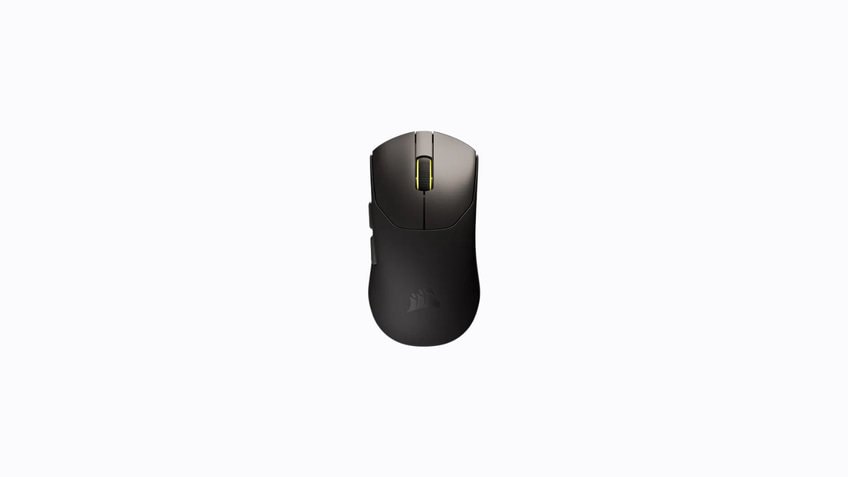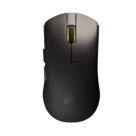Introduction
If you look at mouse releases from big mainstream brands, the weight race seems to have cooled off a bit. Most releases nowadays are between 50 to 60 grams in weight, and that’s because (generally speaking) that’s what pros prefer at this point in time. But of course there are always people who want to go as light as possible, and Corsair is the first big brand to really answer that call. Their latest release weighs only 36 grams, and comes with pretty much everything you’d expect from a modern gaming mouse. In our Corsair Sabre v2 Pro review, you’ll find out whether it’s a straight hit or not.
At A Glance
Corsair Sabre v2 Pro
It’s got a few small flaws here and there, but the overall package is an attractive one, and if you’ve been looking for an ultra lightweight mouse to try out and you want to stick to bigger brands, then this is a great one to consider.
Pros
- Extremely lightweight
- Includes grip tape and additional mouse feet
- Affordable for a flagship mouse from a big brand
- Uses a web-based driver program
Cons
- The switches are mechanical, but don’t feel amazing
- Side buttons aren’t great
- Pre-applied feet are a bit too scratchy
Specs
| Sensor | Marksman S 33K |
|---|---|
| Polling Rate | 1000 / 2000 / 4000 / 8000 Hz |
| Button Switches | Corsair Mechanical Switches |
| Connection | Wireless |
| Shape | Ambidextrous |
| Length | 11.9cm |
| Height | 3.8cm |
| Weight | 36g |
| Width | 6.2cm |
First Impressions
Packaging
Inside the box of the Corsair Sabre V2 Pro, you will find:
- The mouse itself
- A USB-C to USB-A charging cable
- User documentation
- The receiver dongle
- A pair of additional mouse skates
- Precut grip tape
- An alcohol pad for clean skate removal
I, for one, am quite thrilled with what Corsair has added to the packaging. With an MSRP of $99.99, it’s more affordable than flagship mice from other mainstream brands, and Corsair includes more extras than many of those other manufacturers. That’s definitely a plus, if you ask me.
One small thing to note: the mouse feet in the box aren’t exactly replacement mouse feet, but rather an extra option. The Sabre v2 Pro comes with thin feet out of the box, and the other set that’s found in the packaging is a set of large feet.
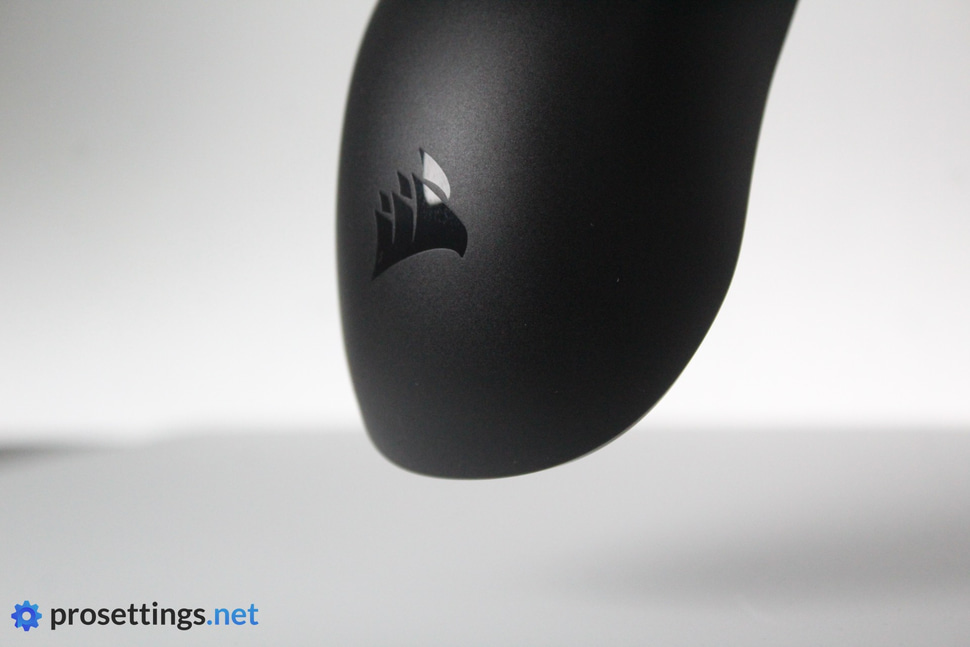
The Mouse
The standout feature of the Corsair Sabre v2 Pro is, by far, the weight. Smaller brands have been putting out extremely lightweight gaming mice for quite some time now, but a mainstream brand that puts out a mouse that’s lighter than 40 grams is extremely rare. And if you’ve never held such a light mouse, the weight will definitely surprise you. Even a state-of-the-art and very popular mouse like the Razer Viper V3 Pro feels like a paperweight compared to something like this. If you’re wondering whether or not that’s a good thing, I’ll elaborate more on that in the ‘Sensor and Everyday Performance’ section.
Shape, Coating, and Mouse Feet
Shape
My hand size is 18.5×10 cm and I use a claw grip.
In terms of shape, the Corsair Sabre v2 Pro is familiar, but not a clone of any super popular shape. It feels similar to the Razer Viper Mini, which is to say that it’s a very safe ambidextrous shape without exaggerated curves.
The middle section gets quite thin, which then expands towards the back and, to a lesser extent, at the front. Due to the design, the back section can make contact with your hand quite easily, which gives you a little extra stability. A very slight overhang at the front of the mouse helps you with picking it up. Finally, the hump is centralized and rather gradual.
What this results in is a mouse that feels safe to grip in a large variety of ways. It doesn’t specialize in any specific type of grip, as it’s a mouse that feels like it wants to appeal to as many people as possible. As such, I was able to get a comfy hold pretty much right away.
It’s not the most unique or revolutionary shape on the market, but it’s a good all-rounder.
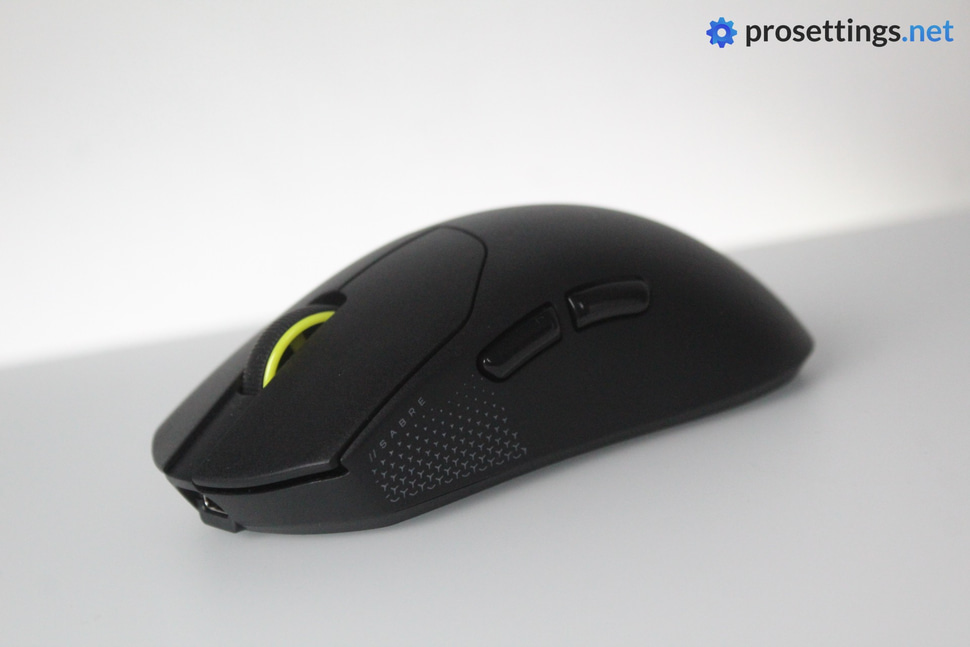
Coating
Corsair is using a very lightly textured coating here that feels pretty good. With completely dry hands, I had some minor grip issues, but once I got warmed up after a couple of minutes, the coating performed as it should.
What’s more is that it handles oils and sweat adequately. I didn’t have the feeling that I needed to wipe this down every couple of matches, which is a major plus to me.
Personally, I would describe the coating as ‘good’. It’s not the absolute best-feeling texture out there, but it does the job that it’s supposed to do without any glaring issues.
Mouse Feet
The Corsair Sabre v2 Pro comes with a pre-installed set of thin UPE mouse feet. I have to say that I was quite disappointed with these. Perhaps they were too thin, causing frame drag, or perhaps the edges just weren’t rounded off properly, but I had some scratchiness issues. Luckily, I prefer larger feet, so once I got done testing the smaller ones, I immediately installed those.
To my relief, the scratching issues all but disappeared once I went for the larger skates. I still wouldn’t call them perfect, but I was perfectly happy using these for my gaming sessions.
The glide that these feet provide is on the faster side when compared to other UPE feet, but not extremely so. The mouse feels super quick when gliding due to its low weight, so one could think that these are super fast skates, but the feet themselves don’t feel like they’re on the extreme end of the spectrum in my opinion. Most people should be absolutely fine with these, I would say.
Given how this is a performance-focused product, it would’ve been nice to see PTFE feet though, as I know most enthusiasts prefer those.
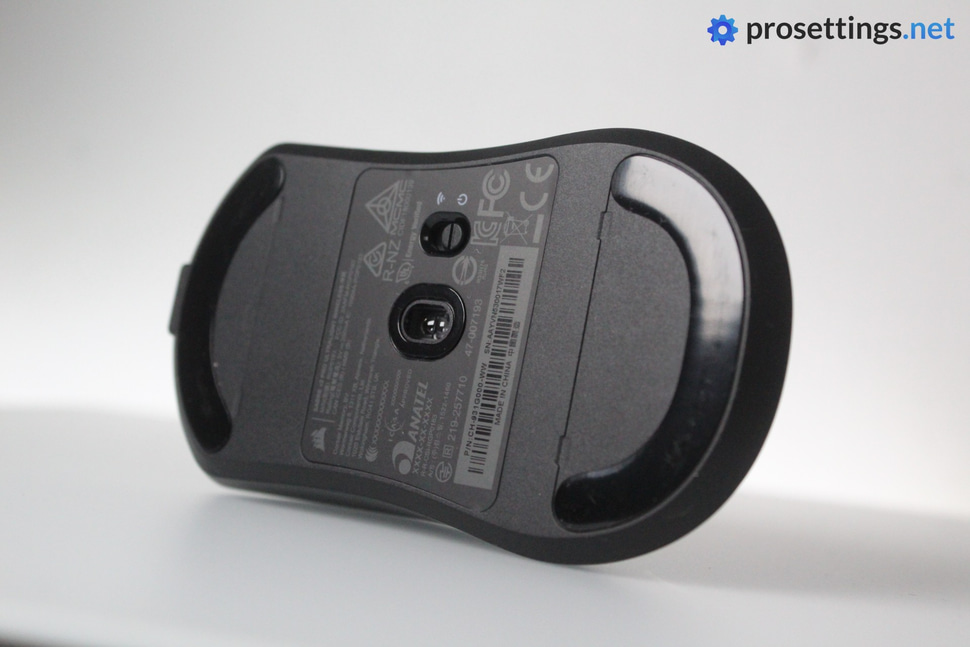
Recommended Grip Types
Due to the size and overall weight, this mouse can be used as a fingertip grip mouse as well as a claw grip mouse. Palm grip can be done, but only if your hands are on the smaller side.
Buttons and Scroll Wheel
Buttons
Despite the spec sheet looking extremely modern, Corsair has notably chosen to forego including optical switches in this mouse. As you may know, I prefer opticals, so I feel like this is a bit of a missed opportunity. However, I also know that mechanical switches, on average, can still deliver a more robust and satisfying click, so I’m not completely against brands who choose to go for mechanical switches.
Curiously, the switches on the Sabre v2 Pro don’t feel all that satisfying to me. The actuation feels a bit ‘vague’ and not as crisp as I would expect from a mechanical switch. In fact, I even thought these were optical switches when I first tested the mouse without looking at the spec sheet. Knowing this, I find the exclusion of optical switches a bit more of a bummer, as the actuation feeling is one of the only objective advantages that mechanicals have over opticals. The clicks don’t feel bad per se, but they don’t feel as good as I expect mechanical switches to feel, if you catch my drift.
Luckily, the button implementation is fine. Both pre- and post-travel is very much acceptable on my unit, and there’s no noticeable switch grinding or sideways movement. When focusing on the clicks, you could say that the right button has a bit too much wobble and a tad too much post travel, but I can’t feel this when I’m actually using it to game, so I’m not bothered by it.
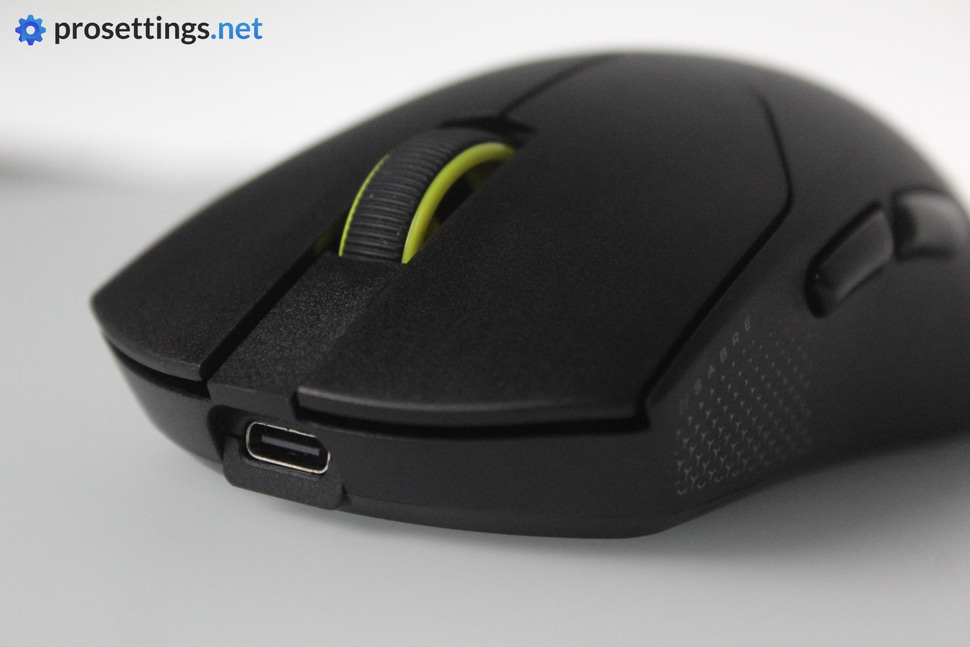
Scroll Wheel
The scroll wheel as a whole feels great. The textured rubber layer is extremely grippy, and the steps are defined just enough to notice all of them individually. It’s also very quiet in operation.
One thing I did notice is that the wheel click is very mushy. The tensioning that’s required to push it is tuned properly (meaning that there’s no accidental scrolls when trying to push or vice versa) but the actual click feels a bit like pushing a key on a membrane keyboard. To me, that’s not a dealbreaker, but this is absolutely a point of improvement.
Side Buttons
The side buttons are okay, but not great. Their post travel is a bit too much, which leads to a clicking experience that doesn’t feel as crispy or tactile as it should. The actuation feels decent, though. If they could fix the post-travel, it would go a long way in making these side buttons feel better.
Build Quality
I have experience with sub-40-grams mice but I haven’t formally reviewed very many, so I was determined to see if Corsair had cut any corners in terms of QC with this mouse. And I was quite surprised here. If you’ve never held a mouse this light before, the Sabre v2 Pro might initially feel cheap and fragile, but that’s only due to the fact that it’s so incredibly light. Most people, perhaps even subconsciously, still associate weight with quality, after all.
Before moving on, I should say that it’s possible to actuate the side button by pressing on the shell and that the top section flexes when you push it hard with your thumb. I already know that some would call this mouse a design failure because of that, but this is quite normal with many lightweight mice. The side flex is, anyway. The top shell flex is admittedly not common. But as long as the shell doesn’t budge while using the mouse normally, I don’t see these things as issues at all. And given the fact that I need to apply unserious amounts of pressure on the shell before it moves, I would classify this as a non-issue in this case. You can obviously make your own judgement on that.
Moving beyond that, I can say that the mouse feels solid. There’s no rattling when shaking or tapping the mouse, and it doesn’t creak either. I made sure to subject it to lots of targeted pressure during my testing (I’ve been flexing that shell quite often over the past couple of weeks) and it still feels the same as the day that I got it, so I’m inclined to say that it can withstand quite some abuse.
So in summary: would it be better if the shell didn’t flex at all? Yes. Is it a major drama that it does? Not to me, as it doesn’t happen during normal usage.
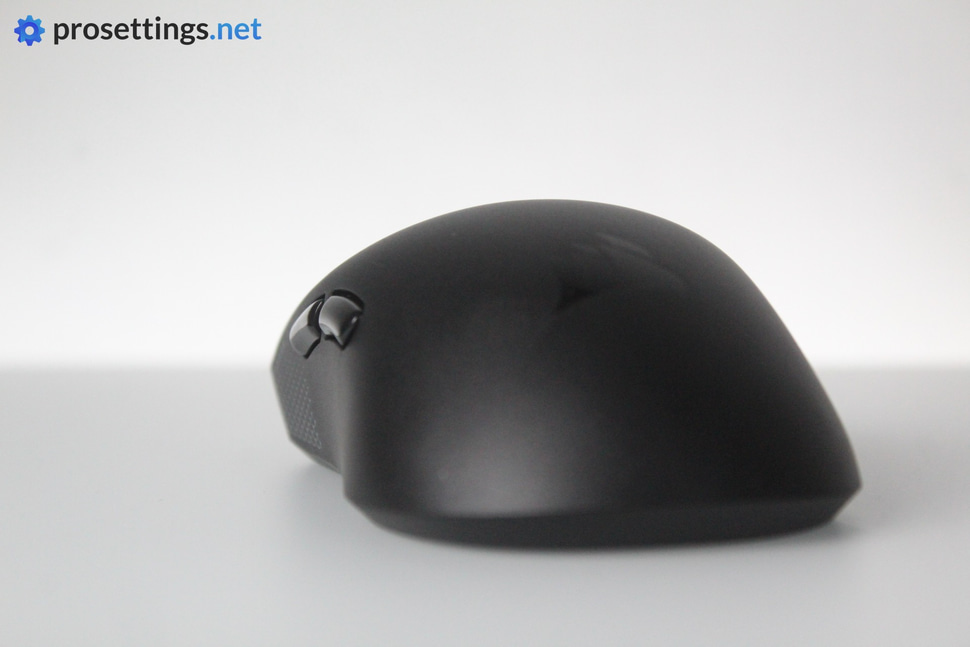
Sensor and Everyday Performance
Sensor
Powering the Sabre v2 Pro is the Corsair Marksman S sensor. That is, like pretty much all proprietary sensors, a customized version of a PixArt sensor. In this mouse, it’s performing as it should. I noticed no sensor malfunctioning that would influence your gameplay, and the motion delay and response times seem to be within reasonable margins.
When going to higher polling rates like 8000Hz, I did notice some minor instability here and there, but nothing out of the ordinary. At 4000Hz (which is the sweet spot for higher polling rates if you ask me) it behaved normally and within normal tolerances.
Modern gaming sensors have been flawless for a very long time now, so you shouldn’t expect any massive in-game performance differences between two mice from reliable manufacturers. Unless something goes horribly wrong with the implementation, you’ve only got yourself to blame if you find you’re missing shots. For me, the Sabre v2 Pro performed as it should in gaming scenarios.
Configuring the Mouse
Corsair products historically required you to download iCUE if you wanted to customize anything about them. With the Sabre v2 Pro, Corsair also introduced a web-based driver program, and I can’t stress enough how much I love this. Having the ability to just open up a webpage if you want to quickly check the battery life or change anything about the mouse is so much more convenient than having to download a heavy driver program.
I know that lots of brands heavily invest in their driver software since it’s also a platform to serve ads and so on, so I applaud Corsair for going with a web-based option here. In their web hub, you can rebind buttons, change the DPI, and even create macros. There are 4 onboard profiles to save your settings to, which is also nice. The software looks simple but easy to use and understand.
People who absolutely love iCUE can still use that, by the way. But for me, there’s no going back to downloadable programs. Corsair is one of the first huge brands to take this step, and I would love it if others followed in their footsteps.
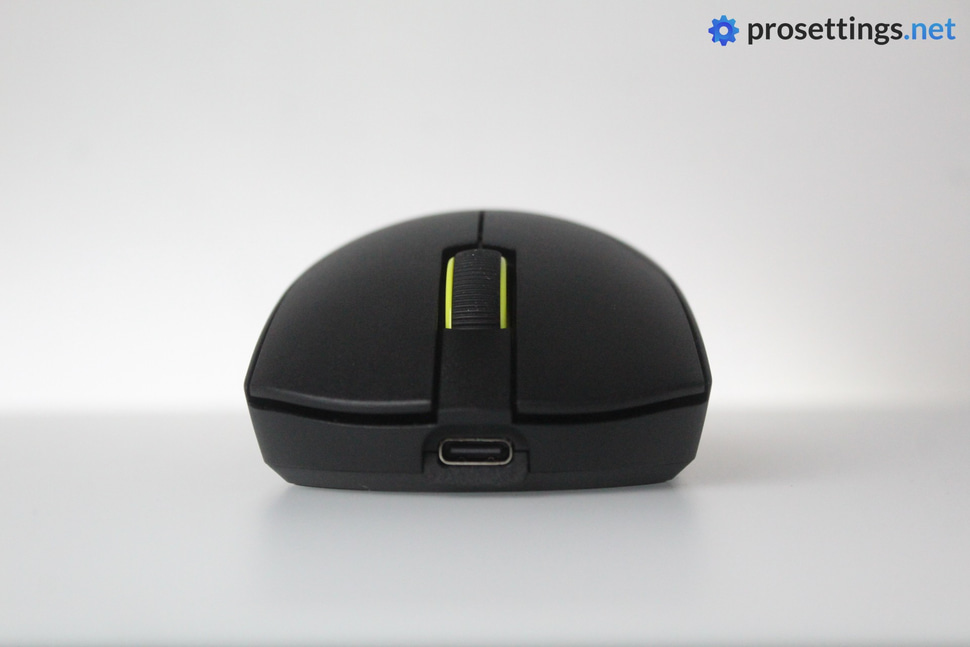
Weight
With a weight of just 36 grams, the Corsair Sabre v2 Pro is extremely light. For reference: that’s around the same weight as a standard lightbulb.
If you’ve never used these types of mice, it will definitely require some getting used to, but it is a very interesting experience.
I will say that I don’t think that a super low weight is objectively better, though. Some people argue that a lower weight means that you have a lower mass to flick around when aiming and that you, as a consequence, are more precise, but it’s not as if today’s popular mice (which are around 60 grams) feel like logs in your hand.
After experiencing all sorts of weights and talking to tons of pros and people in the industry, I would say that it’s a matter of preference. There is a certain range of weight that you should probably keep to (a 150+ grams mouse, for example, is something that would probably feel too heavy for the average gamer) but beyond that, it all depends on what you personally like.
For me, the weight of 36 grams feels fine. Once I got used to it, it felt like any other mouse. And then, once I swapped back to a ~60g mouse and got used to that, it felt good, too. So if you know that you like ultralight mice, you should by all means go for this one. But if you’re not quite sure, then don’t expect your aim to drastically improve in correlation to your mouse’s weight. Shape is still by far the most important aspect of a mouse.
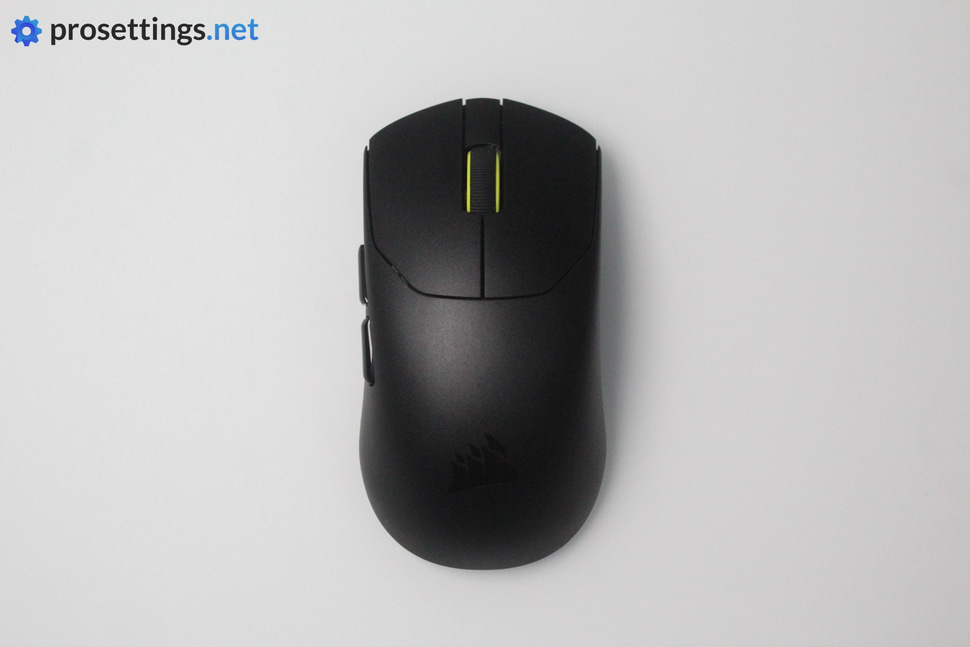
Battery Life
With a battery life of 70 hours at 1000Hz, the Corsair Sabre v2 Pro does not break any records. At 8000Hz, the battery life becomes a lot more respectable, though. You can expect around 16 hours at those polling rates, which is good. I found that this estimate was more or less in line with what I experienced during my testing, but I should state that I do not do any precise battery testing, so I might be off a bit.
In any case: if you game for an hour or three every night, you should comfortably go for a couple of days without needing a refill.
Alternatives
Considering this mouse’s main attraction is the weight, I can’t think of very many examples that I’ve actually reviewed that can serve as alternatives. The Viper Mini by Razer has a similar in-hand feel, but it’s wired and a lot heavier. As such, I wouldn’t consider that to be a true alternative.
Of course, there’s a variety of Chinese mice that have a similar weight and, probably, a similar shape, but I only try to recommend well-known products and/or products that I personally have experience with in this section.
Conclusion
The Corsair Sabre v2 Pro is a surprising entry. It’s pretty much the first mouse from a major brand that goes well under the 40 gram mark, and for that reason alone I applaud Corsair. These low weights might not be for everyone, but it’s cool to see the option.
If you look past the weight, there’s plenty to like, too. The shape is safe, but comfortable and well thought-out. The clicks are well-implemented, and the same can be said for the scroll wheel. The feet (the big ones, that is) glide nicely, and the coating feels good as well. And the kicker? It comes with a web-based driver. That’s another ‘first’ from a huge brand.
Combine all of that, and you’ve got a mouse that’s a surprise hit. It’s got a few small flaws here and there, but the overall package is an attractive one, and if you’ve been looking for an ultra lightweight mouse to try out and you want to stick to bigger brands, then this is a great one to consider.
This product was received for free from the manufacturer and given to our reviewer to test and review. Brands and manufacturers have no editorial control over our reviews. For more information, check out our review FAQ.


